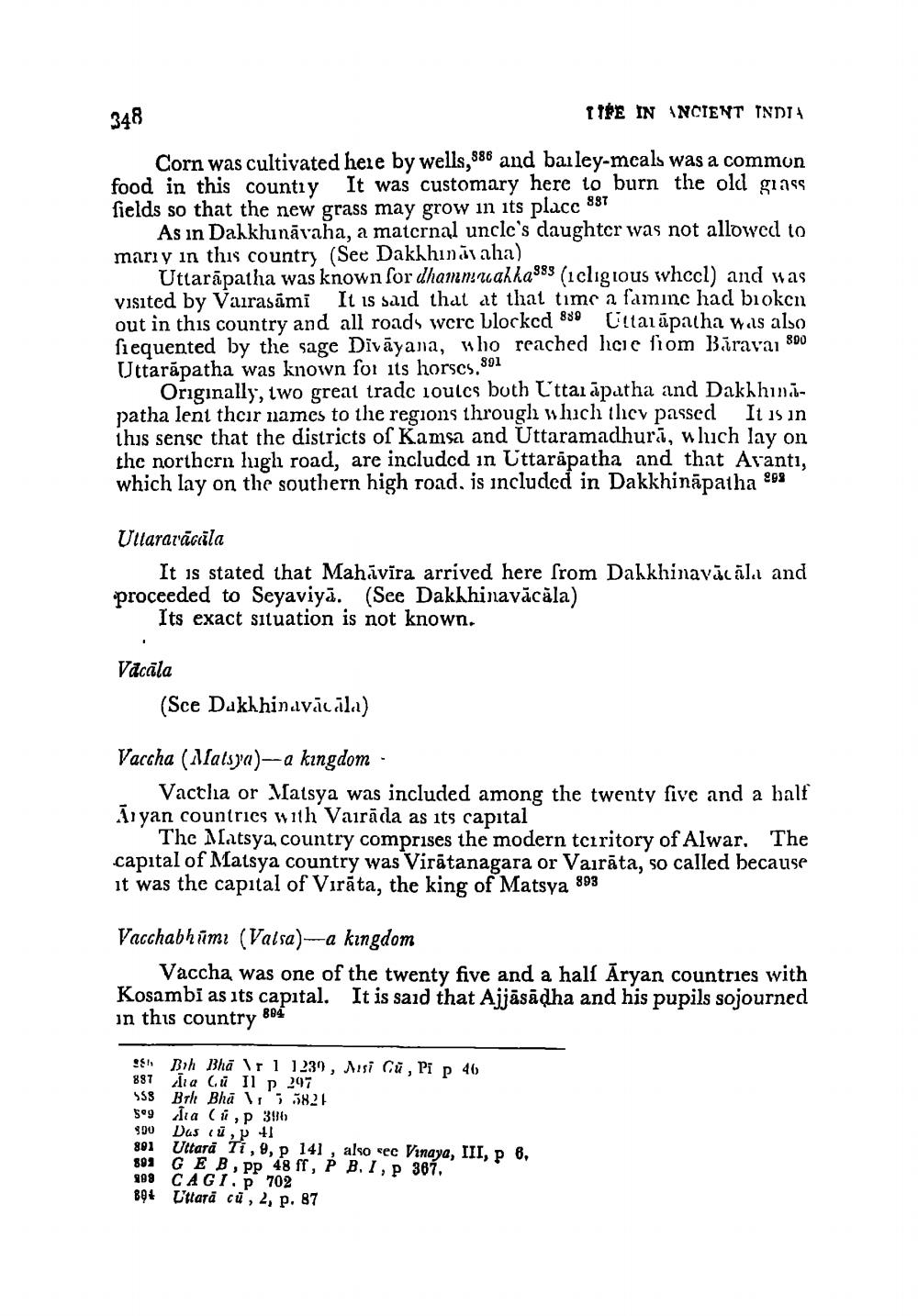________________
348
ITBE IN ANCIENT INDIA
Corn was cultivated here by wells,986 and bailey-mcals was a common food in this countıy It was customary here to burn the old giass fields so that the new grass may grow in its place 887
As in Dakkhinävaha, a maternal uncle's daughter was not allowed to marı y in this country (See Dakkhin vaha)
Uttarāpatha was known for dhammucahkass (1 cligious whccl) and was visited by Vairasāmi It is said that at that time a faminc had bioken out in this country and all roads were blockcd 888 Cltarūpatha was also fiequented by the sage Divāyana, who reached hcie fiom Bärava1 800 Uttarăpatha was known for its horscs.892
Originally, two great trade ioulcs both t'ttai āpatha and Dakhhupatha lent their names to the regions through which they passed It is in ihis sensc that the districts of Kamsa and Uttaramadhurī, which lay on the northern hugh road, are included in Uttarapatha and that Aranti, which lay on the southern high road, is included in Dakkhināpatha 988
Ullararāciila
It is stated that Mahāvīra arrived here from Dakkhinavācāla and proceeded to Seyaviya. (See Dakhhinavācāla)
Its exact situation is not known.
Vacāla
(Sce Dukhhinavācāla)
Vaccha (Matsya) -- a kingdom -
Vactha or Matsya was included among the twenty five and a half Jiyan countries with Vairāda as its capital
The Matsya country comprises the modern territory of Alwar. The capital of Matsya country was Virātanagara or Vairāta, so called because it was the capital of Virāta, the king of Matsya 893
Vacchabhūmi (Valsa-a kingdom
Vaccha, was one of the twenty five and a half Aryan countries with Kosambi as its capital. It is said that Aijāsādha and his pupils sojourned in this country 884
91 Boh Bhä Il 1239, Misi Cu , Pi p 46 887 Īra Gů Il p 297 553 BTh Bhā l : 3821 599 dia (ap 3936 900 Das (1,P +
Uttara Ti, 9, p 141 , also eec Vinaya, III, p 6, 891 GEB, PP 48 ff, PBI, P 367. 199 CAGI. P 702 B9+ Uttară cu, 2, p. 87




